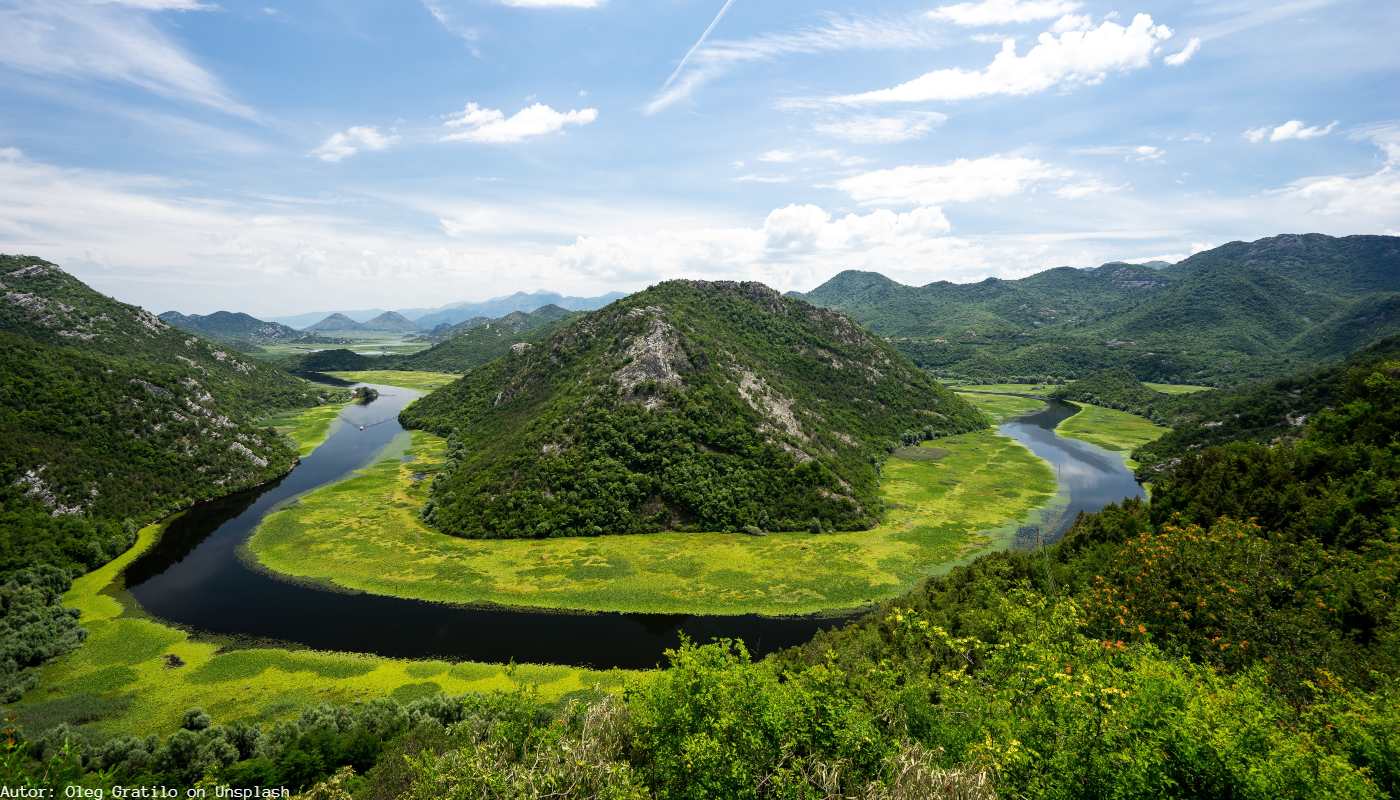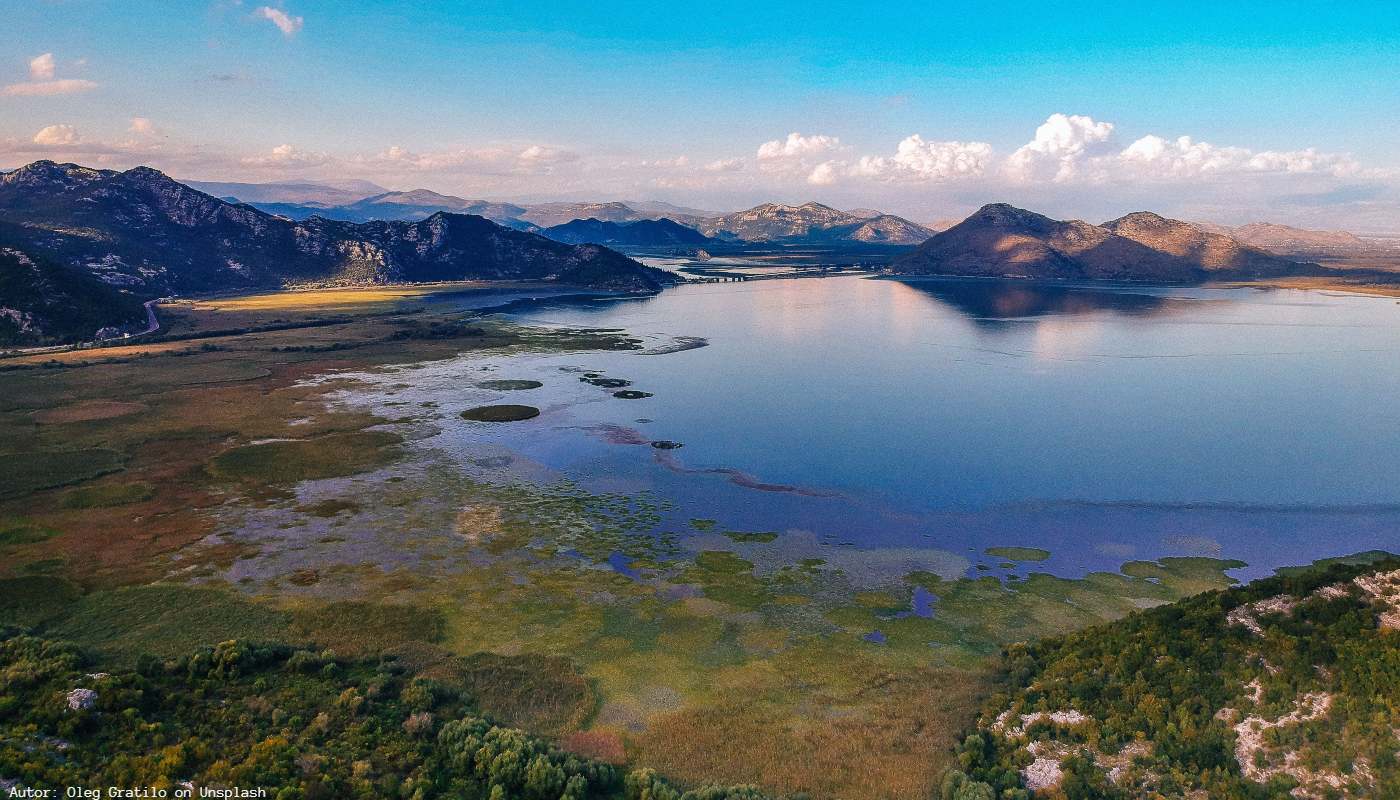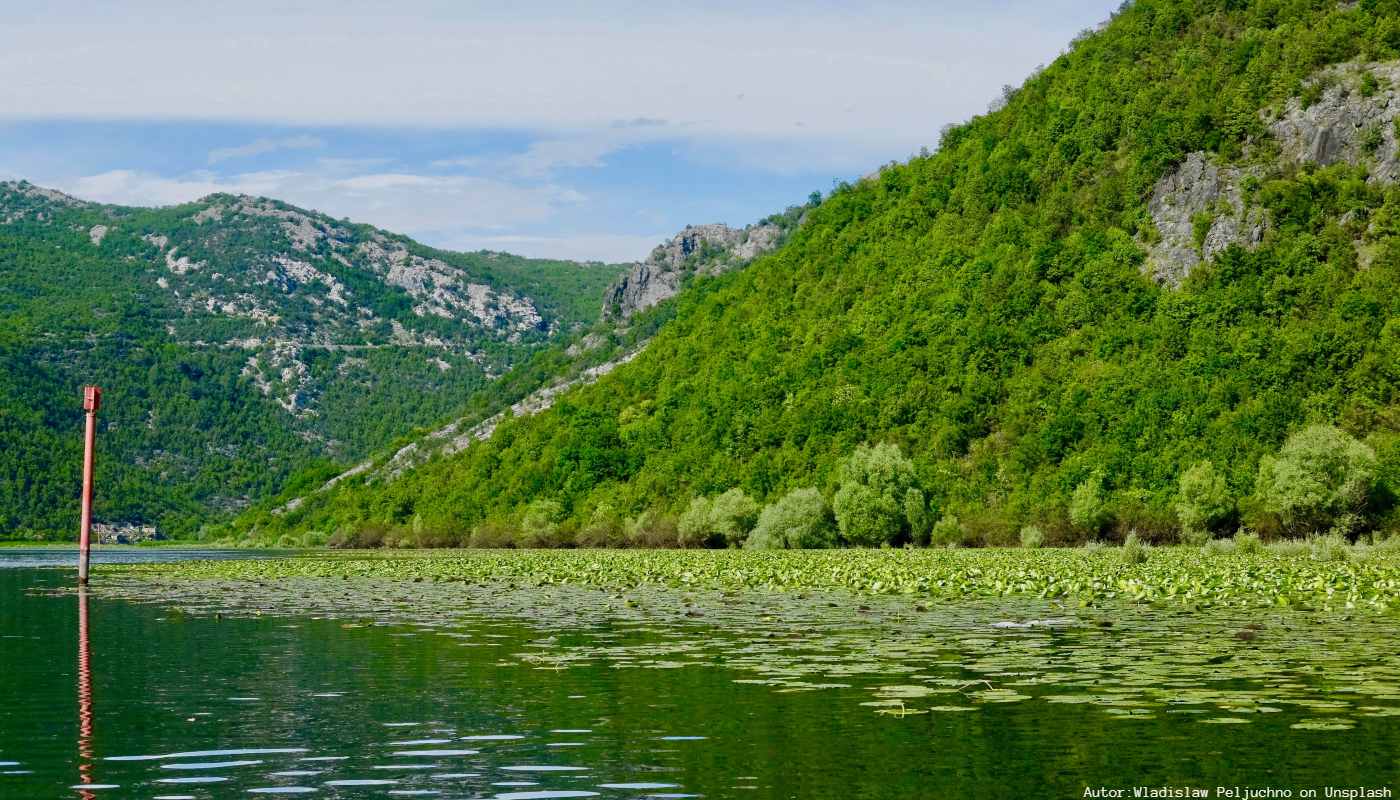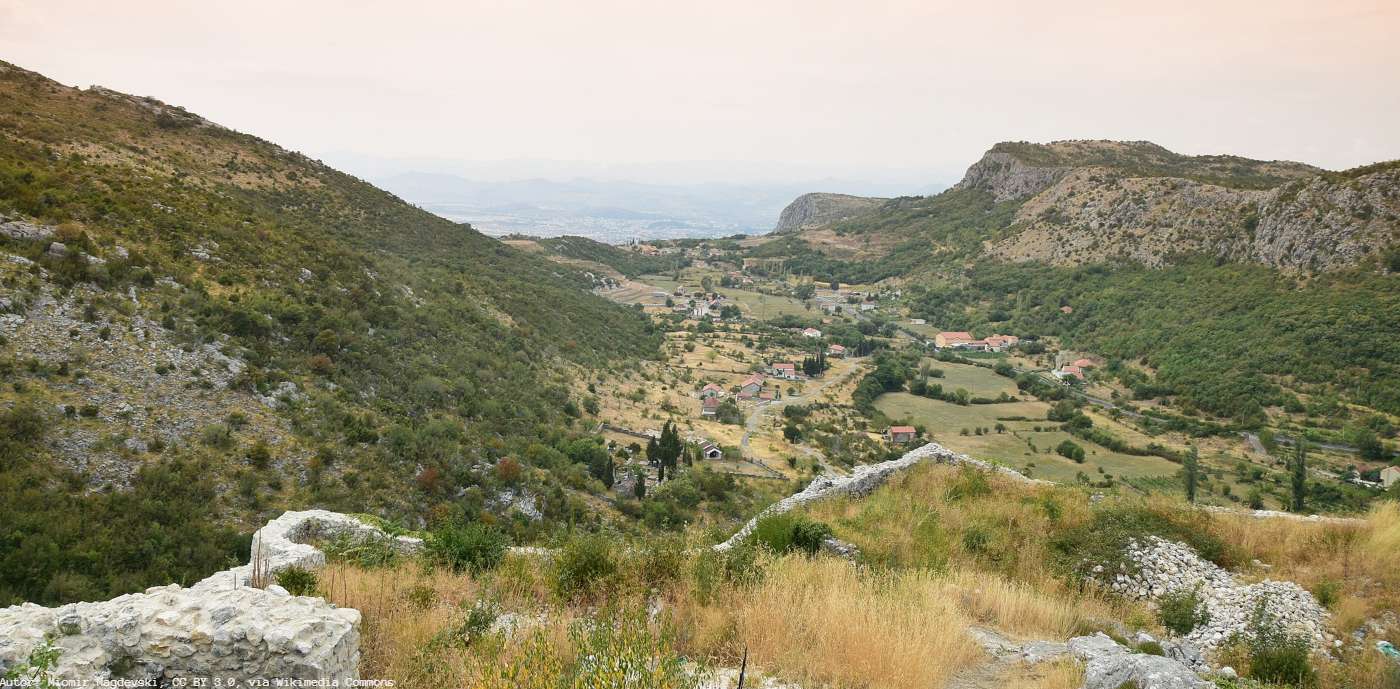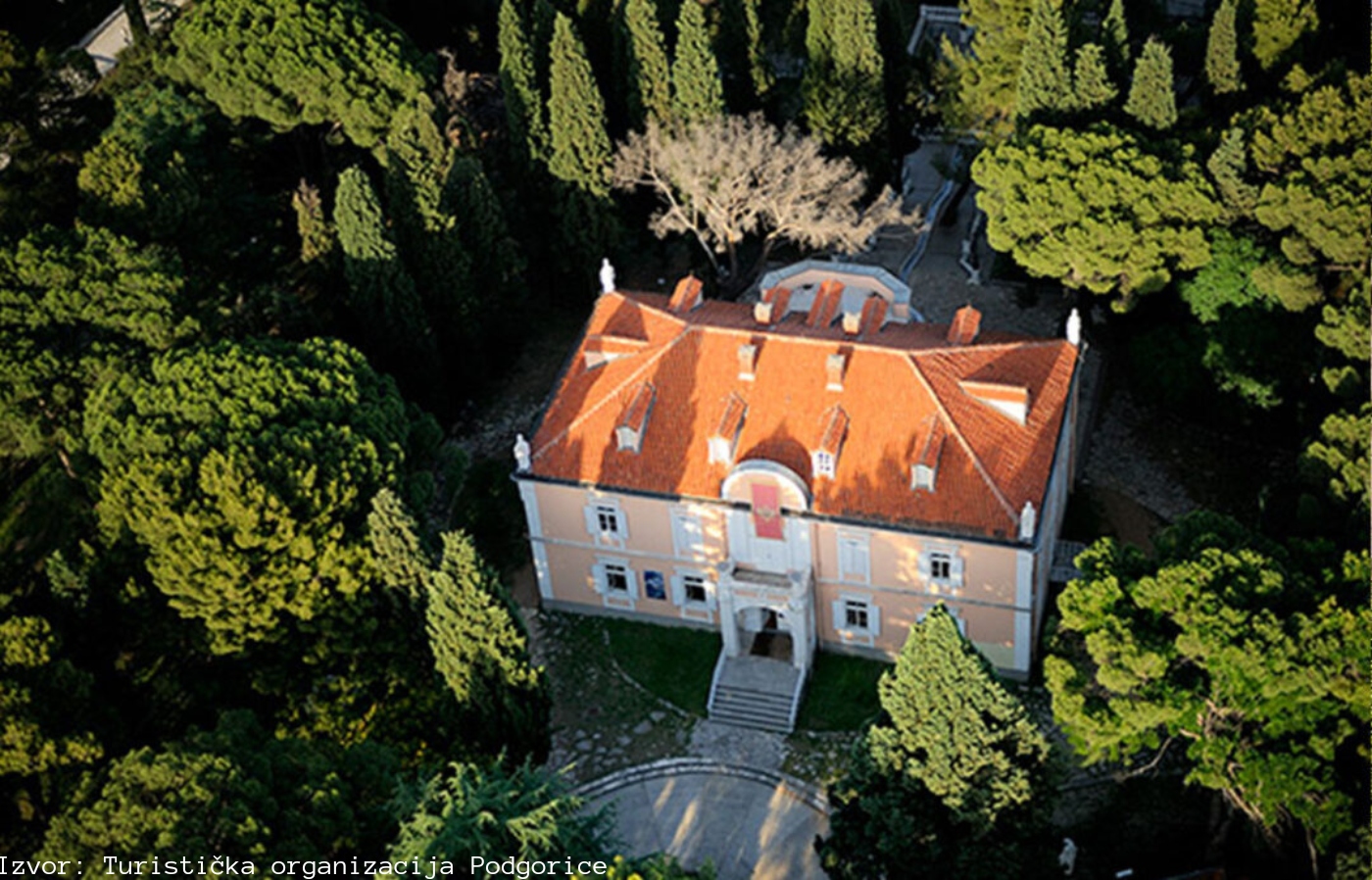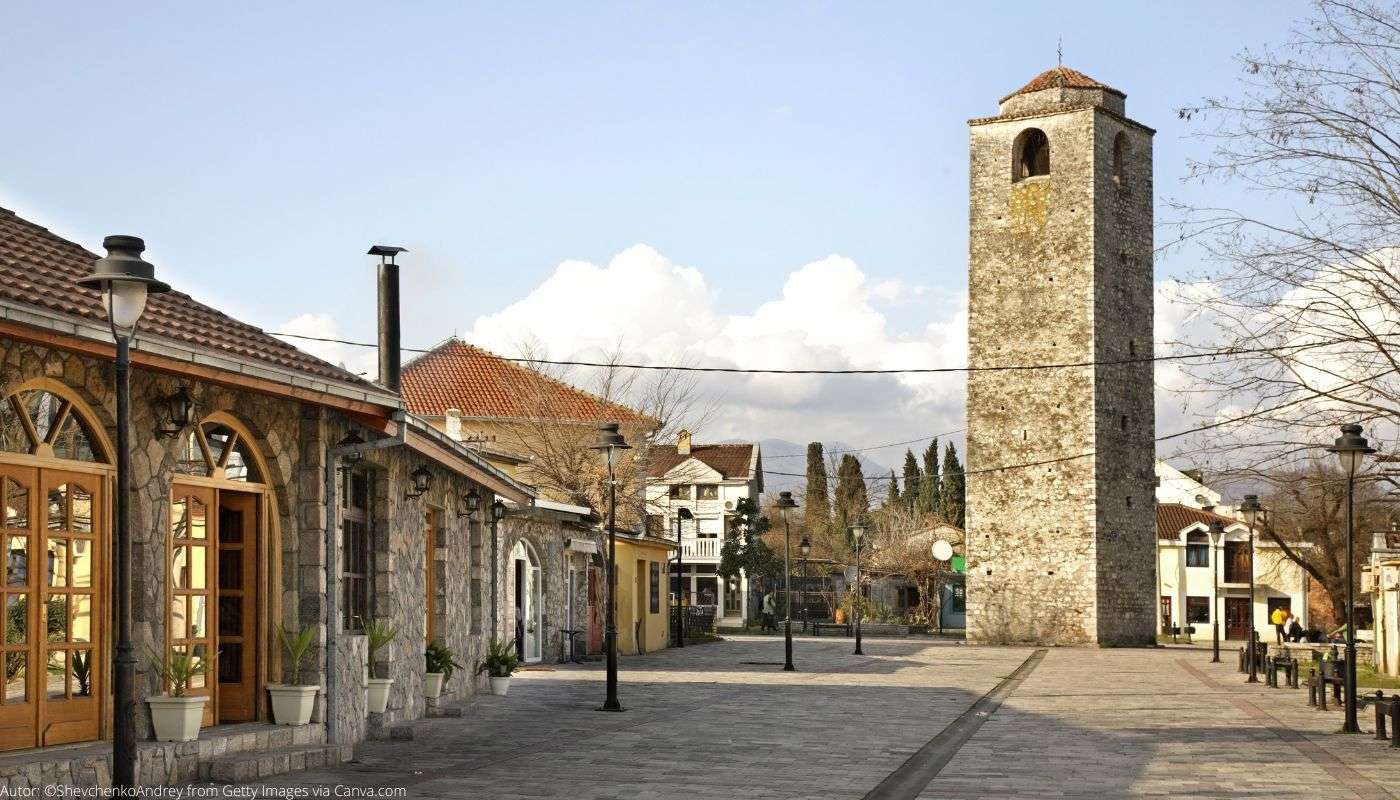When to visit Podgorica?
- During summer - The capital of Montenegro is located near the coastal cities on the Adriatic Sea, so this destination is perfect for a vacation on the way to the sea. Nearby is the Ostrog monastery, the most visited and most important monastery in Montenegro which is best visited when the weather is nice. There is, of course, the inevitable Skadar lake, only 19 km from the city. This lake is a favorite tourist destination during the summer months among tourists.
- During winter - During winter, it is possible to use the city's full potential and its benevolent nature surrounding it. Podgorica is located between ski centers in the north, and they are, we must emphasize, extremely popular during this time of year. For the youngest, there are ice rinks that the city sets up as soon as the temperature allows it.
How to get to Podgorica?
- By car - The main road connecting the north and south of Montenegro would be the route Petrovac na moru - Podgorica - Kolasin - Bijelo Polje - the Serbian border. The main transit routes to other European countries are: to the north E65 or E80 (Belgrade and Central Europe), to the west (Western Europe, Bosnia, and Niksic) E762, to the south (Adriatic coast) E65 or E80, to the east (Albania) E762.
- By bus - Podgorica has a bus station not far from the city center. You could catch a bus ride to Podgorica from all the Balkan countries. Call the Podgorica bus station (+382/ 20 620 430) for more information.
- By train - The most famous railroad Belgrade - Bar connects these two capitals, so you can also reach your destination by train. The price of the train ticket for the 2nd class is 38.40 EUR with a surcharge for reserving a seat of 3 EUR (the surcharge is valid for one direction only). The total price of a ticket for 2nd class on the route Belgrade - Bar - Belgrade is 41.40 EUR, while for 1st class the total price is slightly higher and is 60.60 EUR (57.60 EUR ticket price + EUR 3 one-way seat reservation surcharge). The trip takes approximately 15 hours.
- By plane - Podgorica airport is located 12 km from the city center. The distance between Podgorica and Tivat airport is about 81 km, and Podgorica is 153 km from Cilipi airport near Dubrovnik in Croatia. There is a direct flight to Podgorica from cities in Serbia, Slovenia, the UK, Germany, Itay, Greece, Croatia, Poland, and France The price of the ticket depends on the airline and the time.
Best tourist activities in Podgorica
- Natural attractions - The canyons of the Moraca and Cijevna rivers will leave you breathless. Incredible and harsh nature adorns the beds of these rivers. On the coast of the Moraca canyon, one of the most famous sights is the old Moraca monastery from the 13th century.
- Camping and hiking - The Kucka mountains offer great hardships to many tourists and pleasures for those who like challenges. In addition to their merciless nature full of pits, sinkholes, ravines, cirques, and gaps, these mountains are also adorned by the Bukumir lake. This landscape is perfect for a postcard. It almost resembles the alpine regions of Switzerland.
- Cruise - A cruise on Lake Skadar is one of the favorite items on the list of almost every traveler. A different perspective offers incomprehensibly beautiful lake shores and fairy-tale nature.
- Swimming - Montenegro offers its tourists incredible swimming tours in beautiful natural glacial lakes. We must mention Bukumir Lake, located at 1443 meters above sea level and reachable by a motor vehicle. In addition to this lake, Rikavacko is next in line.
- Trip to wineries - Visiting wineries is a must when you come to Podgorica. Hectares and hectares of land have been turned into fruitful vineyards with countless types of grapes, but also the famous autochthonous ones: Vranac and Krusac. Don't miss exciting tours and good wine, as we recommend you to stop at some of the best wineries: Krgović, Cetković, Winery Rupice Crna Gora, Vukicevic, and Masanovic.
Events and festivals in Podgorica
- Podgorica Cultural Summer - This manifestation lasts throughout the summer and becomes more and more complex every year, despite the circumstances it faces. It consists of numerous artistic, cultural, and musical events that take place throughout the city.
- December art scene DEUS - This festival represents the glorification of art. As part of DEUS, various artistic groups are presented, concerts and performances are organized in theaters throughout Podgorica, as well as unforgettable literary evenings.
- International Puppetry Festival - This well-known festival is traditionally held in the middle of September. People from all over the world participate in it. The festival is of a competitive nature, and the prizes and awards are chosen by two juries. In addition to the expert jury, the works are evaluated by a jury of children who attend elementary school.
- Music festivals - City Groove festival gathers well-known pop and rock performers, bands from the area, and world-famous DJs. In addition to this festival, the following are also held: the Kinotavrik Children's Music Festival, the Poetic Music Marathon, the Music Festival of the Youth of Montenegro, and many others.
- UnderhillFest - International Documentary Film Festival. It is organized every year in the first half of June, and more and more participants have joined this festival.
- Podgorica Wine Salon - It represents a unique event dedicated to promoting and tasting wine in Podgorica. This event allows visitors to taste the wines of local wineries and also to get to know them. The entire event is accompanied by a classical music concert. Participants compete for the prize of the best wine. There are about 20 wineries from Podgorica and its surroundings in the competition.
Activities for children in Podgorica
- Amusement park - Monteplay Amusement Park offers various fun attractions for children. In this fun park you can find merry-go-rounds, cars, slides, swings, and many other things.
- Karting - This city offers adrenaline racing for slightly older children. Your child will not be unsupervised, as they will be accompanied by professional instructors. Younger children can drive cars that are often placed on the boardwalk.
- Indoor playgrounds - There is a large number of indoor playgrounds in Podgorica that offer active entertainment for children. Ball pits, slides, bouncy castles, creative animators, and catering services await you there.
- Activities on Lake Skadar - There are numerous mountain paths for biking and walking, cruises, and places to rest and enjoy nature. You can also visit the island of Vranjina.
What to see in Podgorica?
- Historical sights - Duklja is one of the important monuments of ancient Dokleja from the 1st century AD. It is located only 4 km from Podgorica. Christian settlements, basilicas, and churches were built in this place as early as the 4th century. Remains from the graveyard were relocated to the City Museum, while some more precious ones are in the Russian Hermitage Museum. Medun, together with the remains of the Illyrian city, the church of St. Nikola, and the house of Marko Miljanov, is also an interesting site.
- Clock tower and the old city center - Unmissable architectural monuments from the period of Ottoman rule. The clock tower is one of the oldest symbols of Podgorica. It is located on Becir-beg Osmanagic Square in the Stara Varos neighborhood in Podgorica. It was built in 1667 and was used for defense against enemies and as a clock. It is assumed that the clock on the Clock Tower was ordered from Italy. This tower is one of the few buildings that survived the bombing of Podgorica by the Germans in the Second World War. It was renovated in 2012. There is also the Detedogen fortress, popularly known as Ribnica, from the 15th century.
- Sastavci and the bridge on Sastavci - It is a favorite location and place for young people to gather, especially those in love. It is believed to be from the Roman period and is the oldest bridge in Podgorica. It is located at the conflux of Ribnica and Morac.
- Religious buildings - The Cathedral of Christ's Ascension is the third largest Orthodox church in the world. In addition to the temple, the church of St. Djordje at the foot of Gorica, was built between the 9th and 11th centuries. There are also monastery complexes: Dajbabe (1897), Celija Piperska (1637), and Duga Moracka (1755). Podgorica also has a Roman Catholic church from the 20th century and a mosque in the city.
Accommodation in Podgorica
- Hotels - There are several top-quality hotels in the city, and you will not regret it if you decide to stay in them. Some of the best-rated hotels in Podgorica are Hotel Hilton Podgorica Montenegro, Mali Hotel Hemera, Boutique Hotel Ziya, and Hotel VOCO Podgorica. The price of an overnight stay with breakfast in a double room starts from RSD 14,000 and up.
- Hostels and private accommodation - Many apartments in the city offer a variety of services. The price depends on accommodation, and some of the best rated are 7 Hills - Bed & Breakfast, Athos Apartments, Kaludjerovic Snezana, and others.
- Rural households - However, if you are more interested in the natural environment and fresh rural air, Podgorica has a solution for that as well. You can find more information about this special type of hospitality on the website of the Podgorica tourist organization. Some of the more popular rural households are Lakovic, Rajkovic, and Komanska utjeha. Prices start at RSD 15,000 and up.
Important phone numbers and information
- Ambulance 020/124
- Police Department 020/122
- Fire department 020/123
- AMSS Podgorica 020/ 234 999
- Bus station 020/ 620 430
- Mountain rescue service of Montenegro 040/ 256 084
- Tourist organization Podgorica 020/ 667 535
Where to eat in Podgorica?
- Restaurants - In Podgorica, you will find restaurants of both national and international cuisine. The best rated restaurants in Podgorica are: Konoba Lanterna, Restaurant Hemera, Restaurant Hard Rock Cafe, Restaurant Marquez, Imanje Knjaz, Restaurant Lupo Di Mare.
- Pizzerias - The best rated pizza places in Podgorica are: Pizzeria Calabria, Pizza bar Podgorica, Goodfellas, Pizzeria Bucko.
- Fast food and bakeries - Some of the best-rated facilities of this type are: Home of Gyros, Goodfellas, Burger Factory Podgorica, Kod Vukcevica bakery, Zabjelo Embassy, Centar bakery.
- Pastry shops - Don't miss shops Sonja and Korzo for the best local sweets.
Where to go out in Podgorica?
- Cafes and pubs - If you love a good pop or rock concert or are a pop music fan, visit some of the following cafes and pubs in Podgorica: Street Bar, Kokotov Rep, Mr. Cool Night Club, Beertija Pub & Beer Store, Montenegro Pub, Ragina.
- Clubs - As the law restricts the playing of music in Montenegro to 1 in the morning, most clubs are located in basements. You are guaranteed a good time in the following discotheques: District Club, Mr Stefan Braun, PG Club.
Transportation and taxi services in Podgorica
- City transportation - The city has a highly developed network of city transportation. There are several carriers, so the ticket price varies, but the average daily ticket price is around 3 EUR.
- Taxi service - Taxi in Podgorica is super affordable. There are many taxi carriers, and these are just some of them: Halo Taxi 19700, PG Taxi 19740, Lux Taxi 19704.
Parking and public garages in Podgorica
- 14551 - I Zone (red), the price of parking for one hour is EUR 0.60.
- 14552 - II Zone (yellow), the price of parking for one hour is 0.50 EUR.
- 14553 – III Zone (green), the price of parking for one hour is EUR 0.40.
Surroundings of Podgorica
- Lake Skadar - Lake Skadar is the largest lake in Montenegro and on the Balkan Peninsula. It also constitutes the National Park of Montenegro, which covers 370 square kilometers, as well as the natural habitat of endangered bird species. This natural attraction offers you various possibilities. If you like to walk or ride a bike, the shores and well-maintained paths allow you to do so. However, if you prefer to watch the calm water and sunbathe, you won't go wrong by stopping by the lake. Once you are at the lake, visit the surrounding villages and the Crnojevica River.
- Rakic House Niagara Falls - We know that the name must sound like a mistake, but it's not. You might have expected that this picnic spot offers you a big dose of adrenaline, but it's actually not like that. This popular picnic spot in Montenegro offers you a peaceful and quiet vacation from the city and its hustle and bustle. If you are a fan of hiking, this place is worth your time. The waterfalls are part of the Cijevna river canyon. The canyon is one of the most beautiful in Montenegro. The waterfall dries up during the summer months and is a great place for swimming.
- Cetinje- This city is both the historical and cultural center of Montenegro, and it has around 19,000 inhabitants. The most famous attraction of this city is certainly the Cetinje Monastery, the Museum of King Nikola, the National Museum of Montenegro, the Blue Castle, and the nearby Billiards. Njegos Mausoleum is located within the national park.
History of Podgorica
- Name - The name Podgorica was mentioned for the first time in 1326 in a court document from the Kotor archive. Podgorica, formerly known as Ribnica, was extremely economically strong due to its favorable geographical position. Trade connections between Dubrovnik and the state of Nemanjic were maintained by the road that led to Podgorica via Trebinje and Niksic. It has always been at the busiest crossroads, which has brought it numerous destructions and conquests.
- Turkish rule - Turkey slowed down the growth and development of this city when it was occupied in 1474. The Turks built a large fortress and turned the former settlement with highly developed trade connections into the main defensive pillar against the tribes. The fortress was built at the conflux of Ribnica in Morac and was called Depedogen. Based on the decision of the Congress of Berlin in 1878, the city was annexed to Montenegro. This marked the end of the Ottoman occupation and the beginning of a new era in the development of Podgorica and Montenegro.
- Recent history - During the Second World War, Podgorica was bombed more than 70 times and completely destroyed several times. It was liberated on December 19, 1944, and had around 4,100 victims. Under the name Titograd, on July 13, 1946, it became the capital of the Republic of Montenegro. The name Podgorica was returned on April 2, 1992. After the referendum on independence, held on May 21, 2006, the country became independent, and Podgorica was again declared the capital.
Geography and climate of Podgorica
- Geography - According to the estimates of the Administration for Statistics, in 2019, about 189,260 inhabitants lived in Podgorica, which would represent 30.43% of the total population of Montenegro. The city covers an area of 1,500 square kilometers. On the territory of this city, there are two urban municipalities - Tuzi and Zeta - as well as 141 rural settlements with 66 local communities. Podgorica is bordered by the Moraca and Ribnica rivers and is located in the northern part of the Zeta basin.
- Climate - The climate of Podgorica is influenced by the Adriatic Sea via Lake Skadar. Under the influence of the surrounding mountains, the Mediterranean climate is variable, so Podgorica has a modified Mediterranean climate, characterized by warm summers and mild and mostly rainy winters. Thanks to the influence of the Adriatic Sea, Podgorica has high winter air temperatures. The warmest month is August, with an average temperature of 28.6 degrees, and the coldest month is January, with an average maximum temperature of 6.1 degrees and a minimum temperature of 0.4 degrees.
Demographics of Podgorica
- People of Podgorica - Podgorica is home to 57.35% Montenegrins, 23.35% Serbs, 5.13% Albanians, 2.22% Muslims, 1.98% Bosniaks, 0.3% Croats and 0.37% Egyptians. 50.61% of the population are women, while slightly fewer men are around 49.39%.
Tradition and culture of Podgorica
- Culture - In addition to the many manifestations that have become iconic for this city, it should be noted that there are a handful of cultural institutions that you must visit, such as Podgorica Museum - founded in 1950, Marko Miljanov Museum, Modern Gallery, Kuslev's House, Risto Stijović Gallery, Natural History Museum of Montenegro.
- Tradition: We must not fail to mention several important monasteries in the vicinity of Podgorica. Monasteries have always been an important support in preserving the national spirit. The most visited and most important monasteries are: Ostrog, Celija Piperska, Duga, Dajbabe.










































